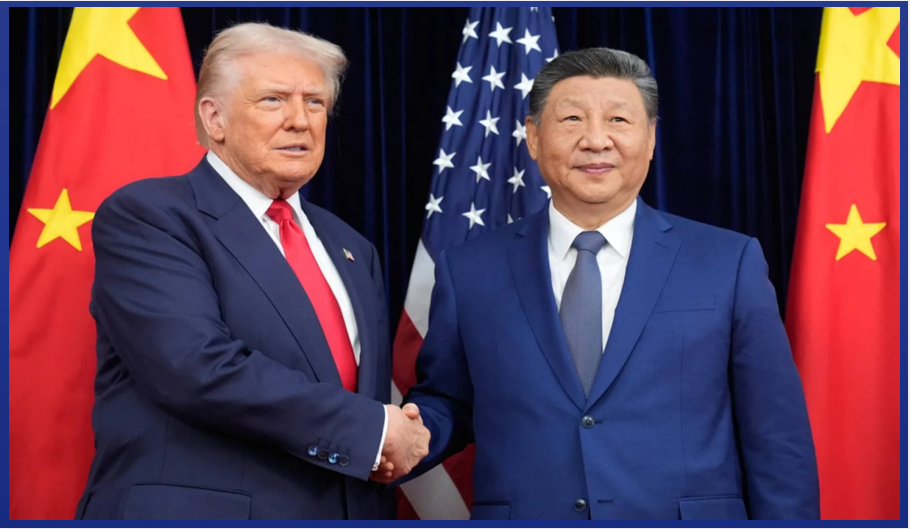Busan, South Korea — The United States and China have agreed to a one-year trade truce, with both sides pledging measures to ease economic tensions that have strained relations between the world’s two largest economies. The accord, confirmed in a White House fact sheet, was finalized during a meeting between President Donald Trump and Chinese President Xi Jinping in South Korea.
Key Commitments
Under the agreement, China will lift export restrictions on critical minerals, resume shipments of automotive semiconductors, and halt exports of chemicals used in fentanyl production to North America. The White House, in turn, announced a reduction in tariffs on Chinese goods linked to fentanyl imports.
A central issue in the talks was the supply of legacy automotive chips produced by Nexperia, a Dutch-based but Chinese-owned company. Roughly 70% of Nexperia’s chips are manufactured in Europe and completed in China before being re-exported. Beijing had previously restricted re-exports to Europe after Dutch authorities tightened control over the firm. The new deal commits China to “take appropriate measures” to ensure the continued flow of these chips to global markets, easing fears of supply chain disruptions.
Agricultural Purchases
China also pledged to resume large-scale purchases of U.S. soybeans, committing to buy 12 million tonnes in the final two months of 2025 and 25 million tonnes in each of the following three months. This restores trade volumes to pre-dispute levels and offers relief to American farmers, who had been cut off from their largest export market earlier this year.
Diplomatic Significance
U.S. Treasury Secretary Scott Bessent described the deal as a step toward de-escalation, noting that it effectively implements a 12-month pause in escalating trade measures. Analysts caution, however, that the agreement represents a temporary reprieve rather than a long-term resolution, with deeper structural disputes over technology, security, and market access still unresolved.
Outlook
The truce provides immediate relief for industries reliant on critical minerals, semiconductors, and agricultural exports. Yet experts warn that the underlying rivalry between Washington and Beijing remains intact, and the durability of the accord will depend on both sides’ willingness to honor commitments in the months ahead.
In summary: The US-China trade truce halts escalating tensions by reopening flows of minerals, chips, and soybeans, while curbing fentanyl-related exports. It offers short-term stability but leaves fundamental disputes unresolved.
Sources: White House Fact Sheet (Nov. 2025); France24; Politico; CNBC The White House POLITICO CNBC.



